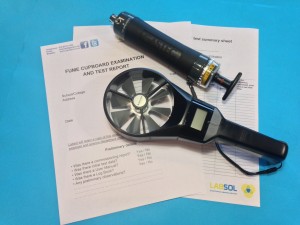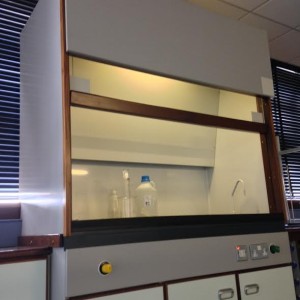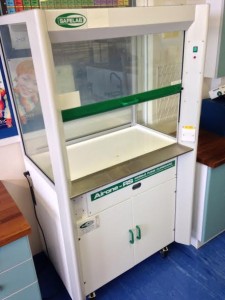Function & Type
In schools, fume cupboards have 2 main functions:
-
To minimise exposure to hazardous gases, vapours or dusts.
-
To act as a safety screen to protect users from minor explosions and splashes.
There are 2 types:
-
Local Exhaust Ventilation (LEV)/ Ducted. A flow of air is circulated within a partial enclosure to ensure contaminated air remains within before being diluted and vented to the outside. A transparent physical barrier (Sash) is also incorporated to provide the user with a safe breathing zone from the contaminated air. This is by far the most common type of fume cupboard in schools.
-
Recirculatory Filtration. Contaminated air within the enclosure is passed through a filter and then discharged back in to the laboratory.
Regulations
Employers, local authorities or governing bodies have a duty under health and safety legislation to ensure that fume cupboards provide adequate protection to teachers, technicians and pupils from health risks arising from exposure to hazardous substances, including airborne contaminants. COSHH Regulation 6 therefor requires that:
(1) An employer shall not carry out any work which is liable to expose any employees to any substance hazardous to health unless he has:
(a) Made a suitable and sufficient assessment of the risk created by that work to the health of those employees and of the steps that need to be taken to meet the requirements of these Regulations.
In school science laboratories, when handling materials and undertaking the relevant activities within a fume cupboard, exposure to airborne contaminants can be minimised and, in many cases, prevented.
COSHH Regulation 9 in accordance with The Health & Safety Executive guidelines in Controlling Airborne Contaminants at Work (HSG258) recommends that all types of fume cupboard are regularly checked (14 month interval maximum/yearly where possible) to ensure:
-
Evidence of duct integrity, especially for flexible ducts
-
Evidence of mechanical integrity: signs of corrosion and problems with sash suspension
-
Cleanliness
-
Illumination
-
Unusual noise from the extraction system
-
Water is in the sink traps
-
Evidence of satisfactory air flow. (Older fume cupboards will not have electronic or audible airflow indicators. Cheap, portable anemometers are not accurate enough for the statutory examination and test.)
Our Service
A competent Labsolni technician will observe and apply relevant best practice to carry out thorough examination and testing. If a log book with records of annual tests from previous years is missing, Labsol will produce one with details of:
-
Visual inspection
-
Measure of noise level
-
Measure of light level
-
Measure of face velocity in 9 separate positions (sash at 400 mm or the working aperture specified by the manufacturer)
-
Measure of face velocity in 3 separate positions with sash reduced to 200 mm
-
Upper and lower variation of face velocities

Testing equipment & report sheets
Testing of Recirculatory Filter Fume Cupboards
Replacement of Recirculatory Filter Fume Cupboard filters is necessary in accordance with an agreed schedule (2-/3-/4-year period depending on usage) or as the result of a test FAIL indicating an excessive loss of absorption capacity.
Labsolni will carry out a visual examination of the seal for small gaps before inserting a filter.
A Labsolni report will state clearly if the fume cupboard tested (LEV/Ducted or Recirculatory Filter) is performing in accordance with the original specification and/or the commissioning or initial test data. A copy of the report will be produced for filing by the fume cupboard User and Labsolni will keep a further copy for a minimum of 5 years.
If you require a quotation for this service, Please Click Here or call us at 078 857 31202


